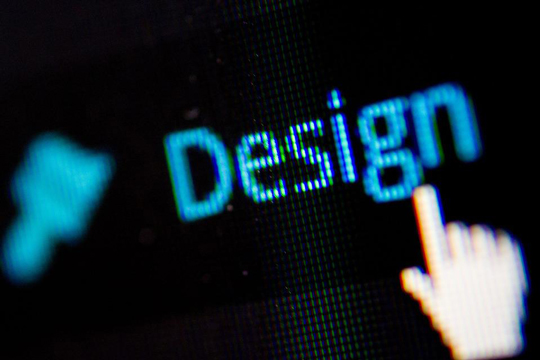Despite the use of powerful social media marketing to connect to the customers, online marketing still holds its importance when it comes to connecting people worldwide. Yes, email’s popular. It is predicted that there will be an increase of 4.3 billion email users by 2016. Email marketing is one of the best channels for B2B marketers because it is quick, affordable, simple, direct and most importantly measurable. And when you think of using a comprehensive email marketing platform to launch an effective campaign, the first factor that determines its success is the design and delivery of the message.
However, with the increasing number of emails being used today, the need for high quality, personalization and use of responsive email design have turned what was once a simple process of writing CSS and HTML into something complex. And this new found complexity demands for a number of editors, tools, customizable templates and email frameworks in designing process.
![]()
With the set of new tools, how do you plan to structure your email design process for quick customer engagement?
Make a proper balance between images and content
Use layouts and email templates where the text flows around the images in such a manner that readers focus on the main content. Do not initiate the layout with a banner image as this might create a dead spot at the top of the message making the email previews disabled in user’s mail box. Let the text dominate by keeping the text to image ratio of your content balanced. The image sizes should be maximum of 600 pixels, since most of the email clients display window is about 600px.
Use of whitespace
Whitespace is highly effective when it comes to breaking crucial bits of information to make it easier for the reader to read the important details. If you’ve several elements of the same size as well as weight, allowing whitespace let reader’s eyes focus on the primary things that matters. Without whitespace, email body can appear formless- just like a huge block that readers may skip over.
Easy to find call-to-action (CTA)
It is important to refrain from placing call to action into an image as email graphics may not always be seen. The best way to make CTA stand out is by giving them live text and turning them into eye-catching buttons to deal with. The images should be used to emphasize messages, and not for messaging itself.
Responsive email design
Responsive HTML email uses media queries to display emails, depending on the size of the device that is being viewed on. Media queries are supported by almost all Smartphones and tablet mail clients. Media query help you create emails that are more readable on various screen sizes. Based on the specific screen size, media types define the exact CSS styles to use.
The majority of the emails opens today occur mostly on mobile devices.
Colors, shapes and lines
The power of shapes and color in email design is imperative. According to semiotics, colors can hold particular meanings to attract the attention of the audiences. The different colors including red, yellow, blue, green, purple, orange, white and black help you to express values. Low values give the illusion of space and happiness and high values express closeness and conflict
Similar shapes like squares and rectangle give a sense of order and structure. Circles are associated with divinity and eternity and act as a symbol of endurance. Also, buttons with rounded or curved corners feel more tangible
In terms of line, they can help express brand personality. Lines could be thin, thick, delicate or bold. Straight lines look man-made and give a sense of order while curved lines look more natural and organic. Diagonal lines show dynamism and excitement whereas horizontal and vertical lines are stagnant.
Make your email scannable
Design your emails as such that the text should appear in clear, delineated chunks that get to the point. The use of crystal-clear headings and putting emphasis on significant concepts in bold will empower the scanning subscribers to get to the essence straightaway.
Talk less
Don’t write much. The users will only read things that will interests them. They don’t read the entire email. So make it crisp and to the point. If you primary goal is to get people click through to your website, there is no need of a lengthy monologue. A lengthy email only overwhelm the readers with mental fatigue and make them more likely to hit the DELETE option.
The conventional vs the contemporary
Conventional pattern always work
Being conventional sometimes work better. People expect ‘easy maneuver’ when they open emails. For instance, when designing emails for handheld devices, big, easily clickable and tappable buttons for the links works best. It is even better to make them 100 percent of the width of the screen, because users always want to tap with either thumb. Similarly, if you add other links in the copy of your email, make sure they appear in bold and contrasting colors to make them stand out and scream for attention. Never place links too close together or else it would be annoying for users if they accidentally tap the wrong link.
Enters the contemporary pattern
Modular design pattern is the technique of creating a system of self-contained components that can easily change and adapt distinct design pattern without altering the system as a whole. But why modular design in email designing process? It improves the quality and consistency of what you send to the customers, while speeding up the daily output.
Working with modular design involves three important steps
Creating a design system
The best way to streamline reiteration is to break down each of common design use cases into system of self-contained components, like a LEGO block, made up of content and media that can be pulled together into several configurations. To start creating a design system, you need to keep the following steps in mind
– Anticipate what types of emails you want to send. Whether it is promotional, transactional or informational? Defining the content needs of the emails will enable you to anticipate the common use case required for the design
– Once you determine common use cases, you can now design individual pattern and components according to your requirement. However, keep each component as self-contained as possible
– As you create and add new patterns, keep the entire design system up to date and organized. Scattered and out of sync components will make the system difficult to use. The best way to keep everything organized is to turn your system into a framework.
Create framework
Creating your own custom framework enables you to add in time-saving custom helpers, hook directly into your email service provider, and keep the markup light and easy to work with. Setting up your own framework can be beneficial and can be done by
– Adding features and tools like SaaS, and YAML data
– Integrating framework with static website generator
– Setting up boilerplate that includes reset file, CSS or Sass structure, custom grid system or a base template
– The layout structure should allow global elements to be shared across all emails. The email template should include
DOCTYPE
HEAD
BODY
YIELD.
Test your designs
You must use A/B to test your design decisions. Never forget to track the important email metrics and use available data to enhance the core design. Try to make continual incremental changes as indicated by the metrics. The point is- do not make your design stagnate.
What to avoid?
– Forms that do not render in most email clients
– CSS positioning and float styles
– Frames
– Flash and animate GIF images
– JavaScript
– Embedded video
– PHP, ASP programming code.
It is important to improve email deliverability to make your message reach its intended recipients, without wasting time and energy. Check out this beautiful designed Christmas email templates for marketing products.





